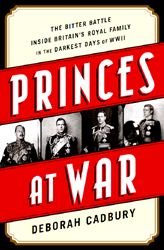A citadel and defended to the death. No surrender can be contemplated.’ On 8 February the Japanese troops put his words to the test by swarming across the Johore Strait which had so far barred them from the island. Some used small boats and dinghies. Others simply swam across. The Australian defenders in the region might have been expected to use the spotlights especially installed to light up their targets and blast the invaders out of the water.
Yet the order to switch on the lights never came. The soldiers were
When British and Commonwealth troops under the command of General Sir Archibald Wavell drove Italian troops into a spectacular retreat early in 1941, there was rejoicing at home at the first glimpse of meaningful victory. The News Chronicle wrote:
‘It is still too early for any complete estimate of General Wavell’s happy and glorious achievement; but from what we already know two factors stand out and demand the most generous praise; the perfect co-ordination of land, sea and air forces and the superb Staff work that preceded the attack and made the co-ordination possible.’
Somewhat prematurely, it ended:
‘Rapidly the Axis is becoming a meaningless phrase: an axis requires two ends, and, if it is to function, each end must perform an equal task. Otherwise the whole thing crumbles away. One day that will happen, and General Wavell, by his care and genius, has brought that day nearer than two months ago we dared hope.‘
Bridge, curtailing their withdrawal. The capital, Kuala Lumpur, was abandoned by the Allies on 11 January and still the retreat continued to gather pace.
It took the Japanese just 54 days to overcome the resistance in Malaya. Their casualties amounted to around 4,600, compared with the loss of
25,000 Allied troops, many of whom were now prisoners of war. Thousands of Indians recruited to fight for the Empire already had doubts about the wisdom of risking their lives for the country which oppressed their own. Now many took the opportunity to join brigades organised by the Japanese and were fighting against former comrades.
Fleeing British and Australian forces made a dash for Singapore and blew up the bridge connecting the island with Malaya as they went. Japanese forces mustered threateningly on the other side.
Singapore was bombed on the day the war with Japan began. The
Right: A Japanese artillery detachment making its way through the jungle in late 1941 during the Singapore campaign.
They found little standing in their way.
Casualties were mostly among the civilian population yet it forcefully illustrated the intentions of the Japanese. Perhaps for the first time, Churchill realised the folly of leaving the island of Singapore so woefully lacking in defences.
In January 1942, he declared: ‘Not only must the defence of Singapore Island be maintained by every means but the whole island must be fought for until every single unit and every single strongpoint has been separately destroyed. Finally, the city of Singapore must be converted into




 World History
World History









